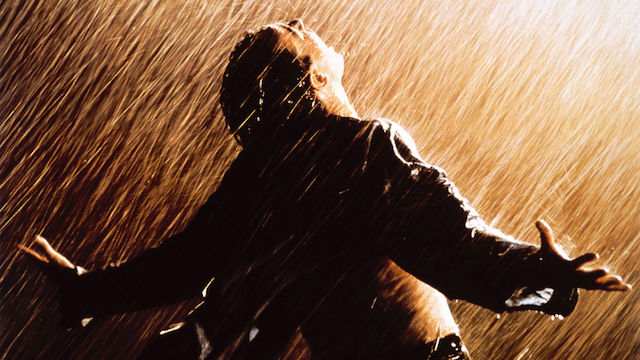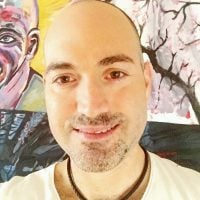
A myth is a story that’s told again and again and serves to explain why something is the way it is.
A much-quoted definition (source unknown) of the Jungian view of myth is:
“Myths express characters and stories that are encoded into the human species in prehistory, and therefore express universal concerns.”
Can we filter our understanding of life and the world through the lens of mythology?
Firstly, Edward Tylor and James Frazer, described as “nature mythologists” pre-dating Jung, viewed myth as a counterpart to verifiable and quantifiable science, which is proven. Their 19th century view placed science on top of myth, and viewed the ascension of science as directly opposing the descent of myth—so the more science expands, the less the old myths stay alive and relevant.
Carl Jung saw myth as a non-literal description of the natural world. He placed myth as intrinsic to the human mind and its function to keep alive the expression of life and continuation of the crucial elements that animate the life-force of a human being. Without being a literal description of the natural world, myth is always alive within the subconscious mind and collective unconsciousness of society.
Jung begins Memories, Dreams, Reflections, his autobiography, “Thus it is that I have now undertaken, in my eighty-third year, to tell my personal myth.”
After leading the psycho-spiritual field for decades, Jung realises that his view of the expanse of his life journey is a myth. Whatever stories and elaborate labels we may summon, our story remains a personal myth.
To paraphrase Jung, myths are archetypal expressions of our human story that pre-date written history.
One could argue that mythology sets the symbolic fabric for human progress, whilst conceptually framing the stories in which people can resolve their experiences.
The personal myth—or private mythology—describes a personal world of our creation that comes from our life experience and feels as real and true for us as any other story.
Is there a context to understand the evolution of these ideas? Can we swim back in time to our pioneering Western teachers for illumination?
The personal myth is arguably an important component of maturing from childhood into adulthood. It is then important to grow this personal myth into a mature adult. Understanding human needs is replete with Kurt Goldstein’s concept of “self-actualisation” and Abraham Maslow’s “hierarchy of needs.”
With myth being suppressed and slowly dying as a relevant force in modern life, 20th-century mythologist, Joseph Campbell acknowledged the crucial role of mythology and how our world is hurting from a lack of it in our lives. Campbell writes in The Hero with a Thousand Faces, “In the absence of an effective general mythology, each of us has his private, unrecognized, rudimentary, yet secretly potent pantheon of dreams.”
Our society has not provided the ground for sufficient initiations, symbolic ritual, and cultural storylines for our spiritual growth and developing consciousness.
Social conditioning is designed to nullify passion and purpose. Wage slaves and the people in the majority who work for money in order to survive are merely continuing the system that was drilled into them as children.
“We’re not on our journey to save the world but to save ourselves. But in doing that we save the world.” ~ Joseph Campbell
Once we can free ourselves from the fears that live in our hearts, we can open to the possibility that we really live in a void that is open and filled with possibility and unimaginable joy. This is the limitlessness of pure potentiality, endless openness—or what the author Adyashanti calls “emptiness dancing.” In space, we can create from imagination. In space, we have the possibility to manifest our deepest yearnings. From an authentic place, we can focus on that which inspires the most beautiful part of ourselves, our hearts.
In The Inner Reaches of Outer Space, Joseph Campbell writes “Myths are products of the human imagination…certain themes and images (archetypes) are constant since the appearance of man. Histories are chronicles of social events, which according to place and time, greatly differ.”
Our hopes and dreams sometimes seem outside of the world, and it can feel like nothing has changed until we step into the unknown and act from our inner knowing. All the world is story; it is made up of people’s stories, people’s dreams, all the personal mythologies playing out in symphony.
Human tendencies are ingrained in our stories, transcending time and space. It is in how we create our personal myths, that we may still take hold of the steering wheel and find the pivot to reach out and fashion the world in our image.
Campbell described how the innate themes in myths are buried in local stories that become the specific identifiers or masks of local groups—folk ideas, ethnic traditions, and religions. Campbell studied, admired, and understood myths, presenting them as mind-expanding explorations of innate human tendencies. The transcendent value of all stories is to convert an isolated individual who recites the stories into a fully-fledged member of a group.
What is your personal myth, and how has it affected the life you have created? How does your story affect your perspective?
If you were writing your autobiography posthumously, how would you describe your personal myth?
~
~
~
Author: David Zenon Starlyte
Image: “Shawshank Redemption” still
Editor: Travis May
Copy Editor: Catherine Monkman











Read 1 comment and reply